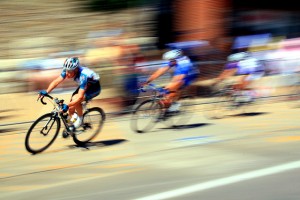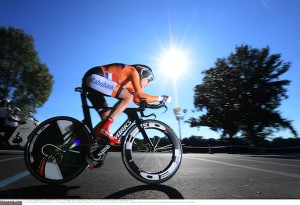
Finding your ideal cycling cadence can give you free speed! Yes… I said free speed! Who does not like to go faster with the same amount of effort?
What is Cadence?
Cadence is the amount of times your foot completes a full pedal stroke in one minute (also known as rpm). You can measure this by counting each revolution or you can buy a cycle computer. I personally love all things garmin.
Efficiency
From the month I started cycling I compared myself to a car. You may think that odd… but here is why….
In my car I have a gauge that measures current and average fuel consumption. Every time I drive, my goal is to see how little fuel I can consume. In order to do this, I have to find the “sweet spot” or the speed at which my vehicle travels the most efficiently.
Over thousands of miles I have discovered that my most efficient speed is 42mph in 5th gear at 1700rpm. So… how does this translate to cadence?
At your ideal cadence you will use less energy to travel the same distance at a certain speed. It can be broken down into simple science… Imagine you have to lift 1000 pounds over your head. If you try and do it all at once you will not be able to do it, if you lift it in one pound increments you are likely wasting energy just doing the motion. If you lift the 1000 pounds in 20 pound increments, that might be just right. Cadence is similar, you just have to find what is just right for you.
How do I find my ideal cadence?
It may be a bit obsessive, but you can test yourself with a heart rate monitor (that hopefully came with your cycle computer). I suggest you find a flat stretch of road that takes approximately 10 – 15 minutes to complete. Do a 20 minute warm up and then start one lap at 80rpm, on a different day do one at 85 under the same conditions then again at 90 and so on… try to maintain approximately the same speed and then compare your heart rates. The lap with the lowest heart rate is your ideal cadence.
When I began cycling I was quite obsessed with cadence, it was one of the only things I had showing on my cycle computer. As I continued to cycle and increase my fitness I focused on this less and less. If you listen to your body it will know what your ideal cadence is. I now know within a couple of rpms when I should shift up or down.
As you continue to cycle more and more your cadence will likely increase along with your fitness, so just because your ideal cadence was 85 two months ago does not mean it is your ideal now. Try to listen to your body.
 What is the suggested cadence?
What is the suggested cadence?
There is no hard set and fast rule on ideal cadence, and it actually depends on what kind of cycling you are doing, body type and fitness level.
In a criterium race you want to have a higher cadence (90-100rpm) than in a time trial (80-90rpm). A higher cadence in a criterium allows you to accelerate faster out of a corner or respond to an attack, where as in a time trial you are focused on power and not on attacks. In mountain biking you want a low cadence because a high cadence causes you to get bounced around on rocky and uneven terrain.
Endurance Rides
If you plan on endurance cycling the suggested cadence is between 85 to 100. My first attempt at an endurance ride my cadence was an average of 78 for the entire ride… (actually… I didn’t finish… I got off my bike deflated my front tire and called my sister to come pick me up due to the “mechanical difficulties” I was having).
My cadence was low due to my fitness level and my dumb testosterone male thinking of: slower cadence = more power = faster. In reality the equation looked more like: slower cadence = using more energy and cooking the legs = bonking.
My last endurance ride of 112 miles was at an average cadence of 97. (This is on the high end of recommended cadence… but it is my ideal cadence) You will continue to adapt so do not feel discouraged if your cadence is low, as you can see, it will progress.
Find some free speed by finding your ideal cadence cycling and save energy!